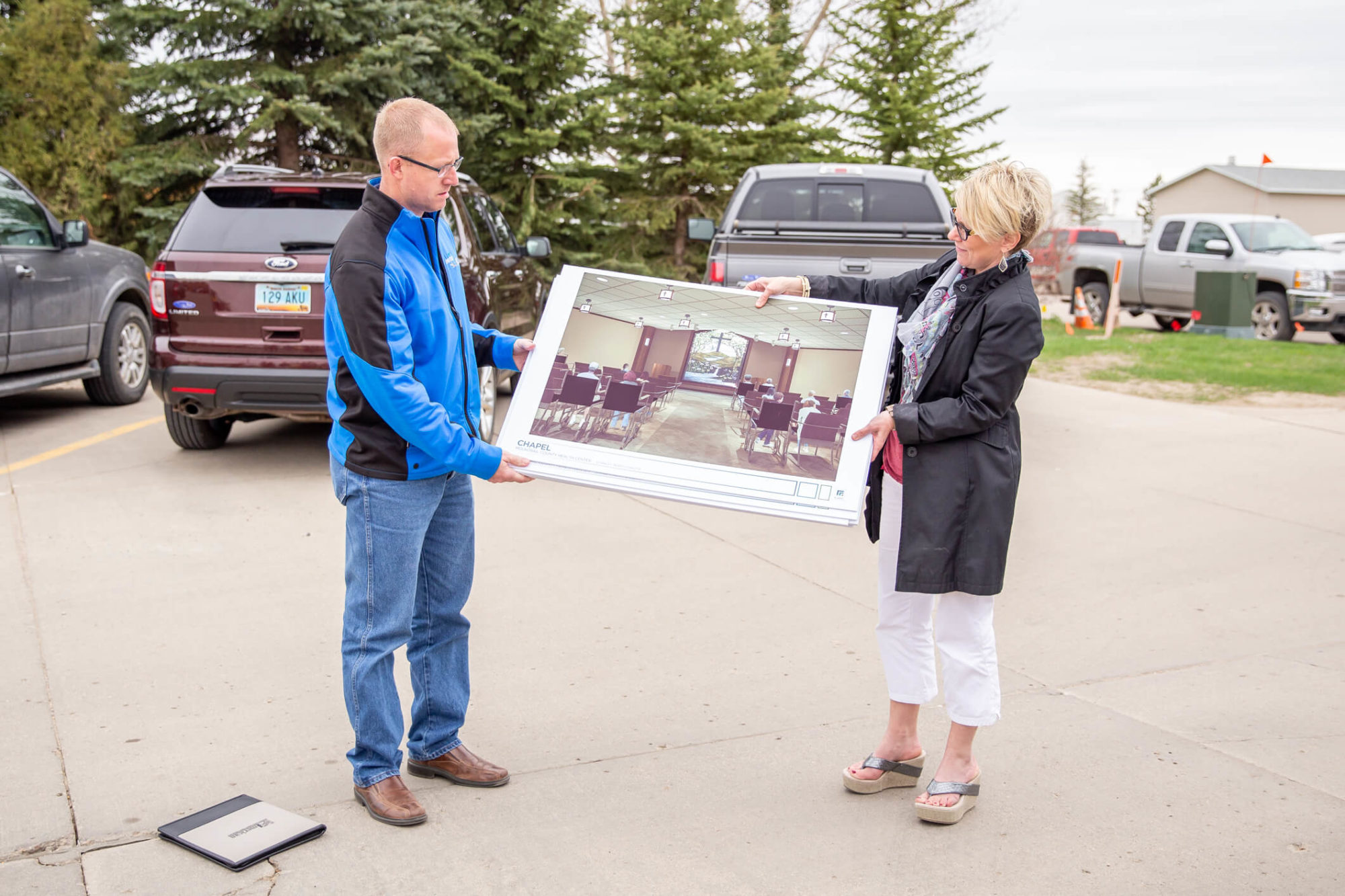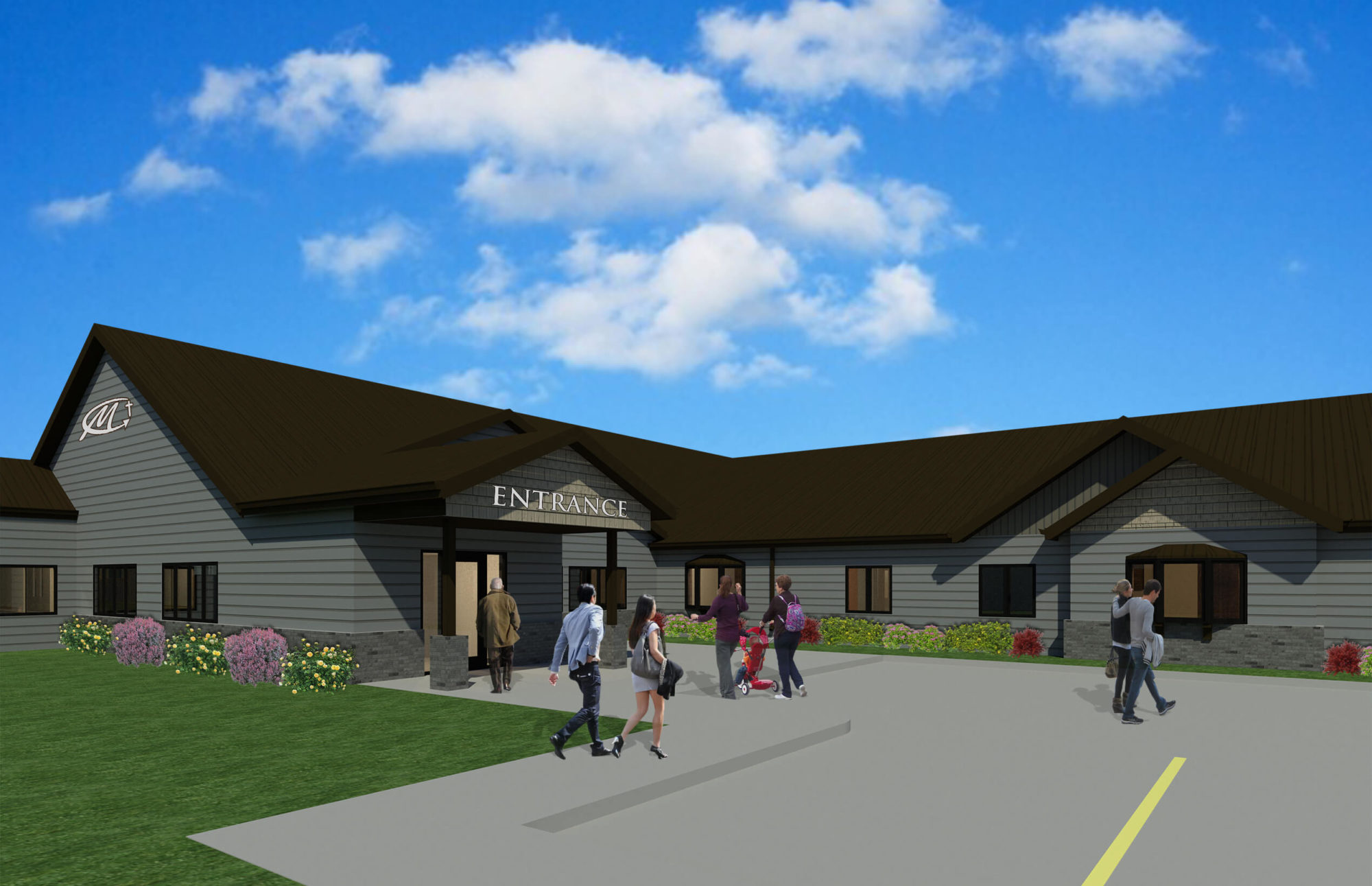Assisted living facilities are becoming a popular choice among seniors because they provide a level of independence with round the clock access to personal care services. Assisted living facilities allow seniors to enjoy social interactions and an overall better quality of life compared to living at home.
Because most assisted living facilities are located in larger towns, seniors are forced to move away from smaller communities to have access to this kind of care. Not only does this impact them, it also affects their families that now have to travel to visit them. Smaller towns are beginning to recognize the importance and need for local assisted living communities.
Here’s what Stephanie Everett, Foundation Director for the Mountrail County Health Foundation as well as the P.R. and Marketing Director for Mountrail County Health Center, has to say on the importance of assisted living in rural communities and how beneficial they can be.
The Mountrail County Health Center Assisted Living and Chapel Addition in Stanley, ND was designed by EAPC and is currently in construction.

Why is it important to keep seniors in rural communities?
The industry is moving from the context of primarily skilled nursing care in an institutional setting to branching out into more homelike environments. Assisted Living is one of the most desirable and economical methods to achieve this. This Assisted Living will not only be a newly formed employment opportunity, but it will enable residents who possibly would have moved to an Assisted Living in Minot, or further, to stay here in our community. By keeping our senior population within the community, we are able to continue our own mission and keep main street businesses viable such as pharmacies, restaurants, food and lodging for visiting guests, etc. That means they will continue shopping at our local stores, getting their hair done, eating out and going to church here in Stanley. This also means that their families visiting will stay here in Stanley doing the same with them.

How will your community benefit from an assisted living facility?
We have known for years that we are losing Stanley residents to larger cities in North Dakota because we do not have the sequence of care needed as they grow older. We have Centennial Court, which is independent living for the elderly, and then our next level of care is the Nursing Home. We are missing a key point of care that so many want now as they grow older: Assisted Living. With the completion of the Assisted Living, we will then offer the full continuum of healthcare services as we become a continuing community retirement center.
What was the process for seeking funding for this project?
In October of 2013, the Mountrail County Health Foundation implemented the “Partnering for the Future” Capital Campaign to meet the funding needs of three construction phases wanting to be completed on the campus of the Mountrail County Health Center. With the help of generous local residents, churches, business owners, the T.H. Reiarson Trust and key energy companies, the Foundation has been able to raise a little over $6 million to date and have paid in full the first two phases of construction. Currently, the building funds have a little over $3.6 million in them from donors and a low interest loan for Phase Three, the Assisted Living and the Chapel. Future funding options for the remainder of the project will come from further private donors, the local EDC, grants and low interest loans.
Alan Dostert, CEO and Architect for EAPC, also touched on the importance of keeping seniors in our rural communities.
Alan is a native of Berthold, ND. Berthold is only a half hour drive to Stanley, ND where the Mountrail County Health Assisted Living and Chapel project is currently breaking ground. Alan previously stated that “Working with people you have known your whole life to design this needed facility is something special.” He offered some valuable insight into designing for assisted living facilities. Alan is a part of the historical commission in Buffalo, ND.

What special design elements for assisted living facilities must be taken into consideration?
The biggest thing in assisted living facilities, more than in long term care centers, is they need to have a sense of independence. Seniors choose to live there because they need help with something, whether it is medication, laundry, housekeeping, etc. They have a willingness to contribute to the community and a willingness to contribute to their own well being. Assisted living facilities are a tool to extend their lives in terms of contribution into society.
Our population is living longer. How does that affect how you design for more active lifestyles?
There is no question that when you look at assisted living and retirement projects including long term care and basic care, you see a lot more spaces being designed for a variety of different activities like billiards, exercise rooms, libraries, kitchens, etc. Another space that has become really popular over the years is a lounge or a place to have a drink in the afternoon. Why should someone who has lived their whole life be denied access to reasonable amounts of alcohol? It is becoming a popular part of common space design to provide a wet bar.
We know that certain colors are better for restaurants. Are there any color schemes that are used more for assisted living?
The biggest thing for assisted living and doing any kind of color scheme for the aging is to keep in mind the hardening and yellowing of the cornea. This causes a certain amount of blurriness, reduced ability to focus, and creates a grayish wash of color. When designing for aging, the use of color needs to be vibrant and clear, not muddy. Grays and monotones are not a bad choice, but you do not want to pick colors that are halfway green or halfway blue, for example, as these can look muddy to the aging eye.

Why is it important to keep seniors in rural communities?
Seniors are the ones that carry the historical context in terms of our culture. They are our walking history reference books. They know the history of their communities. They can tell you who was living where and what happened when a certain storm came through and who’s homes were affected. They can also tell you what happened during the war and what happened, for example, when JFK was shot. They can bring those occurrences back to a very local scale of the town from which they are from. They can tell us how schools were impacted when certain historical events took place and what the tone of the community was and if the community took any action. Those are the sort of things you won’t ever find in history books or historical references. You can only get that from the people that lived there and experienced it firsthand.